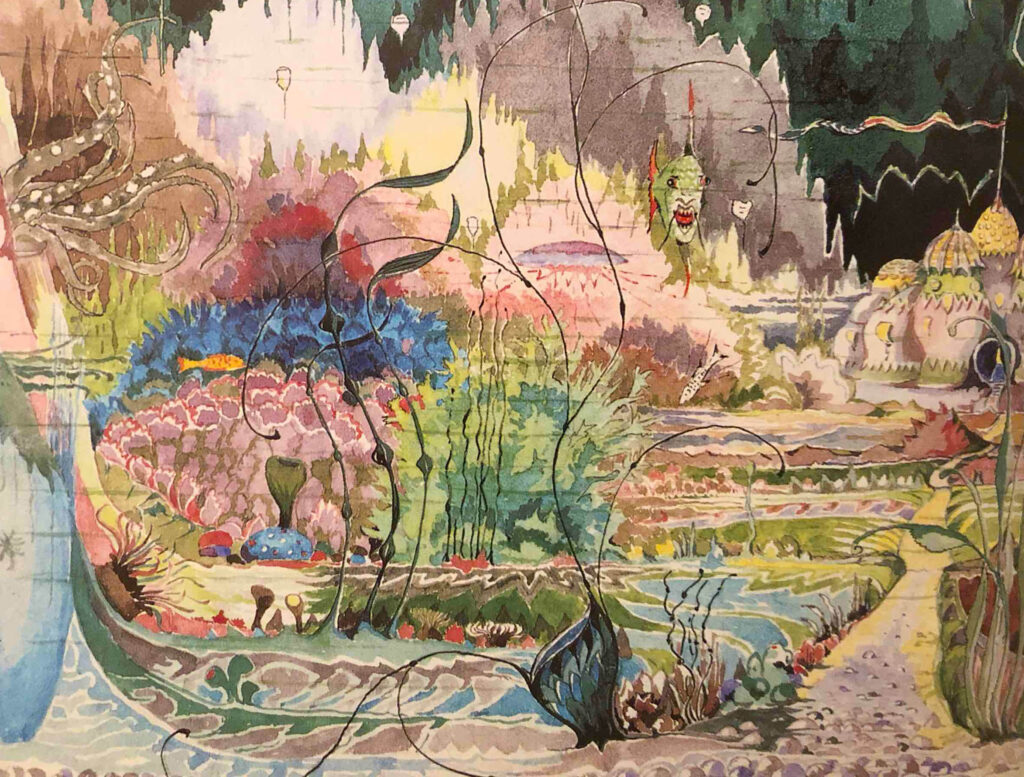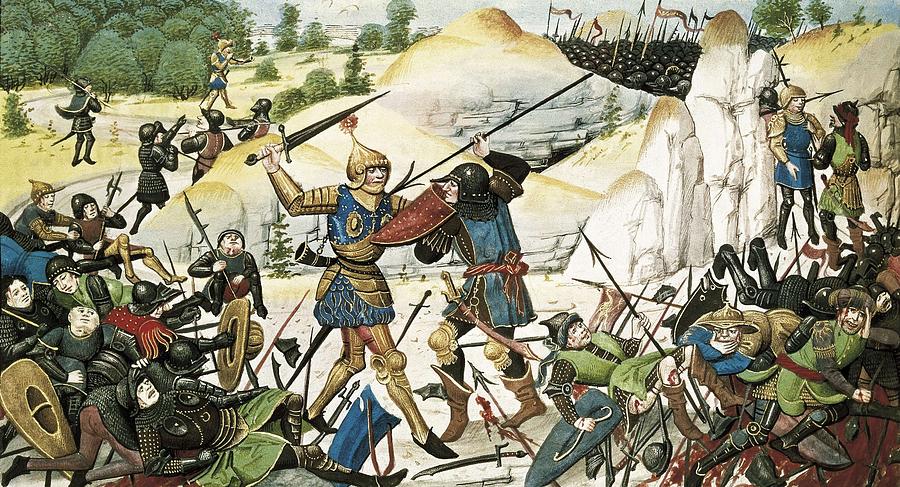Home » Posts tagged 'religion'
Tag Archives: religion
My Name Is Aram
William Saroyan
1940
(An open and curious boy growing up in an Armenian community in California encounters the rich quirkiness of his family and neighbors.)

Writing from the spirit of memory. Not a record of specific memories, but effortless intuitive writing that naturally conjures the ethos, tinged with wistfulness, that can accompany the distant remembrance of simpler times. This was the inspiration of William Saroyan as he sat down, and boom, suddenly there appears what would become his best loved book of stories. With all the intense effort I put into my other books, this one (I’m imagining he thought), the one that practically wrote itself, the one in which I warned readers that nothing extraordinary would happen, this is the one?! In his own incredulous (or perhaps disingenuous) words, he “does not believe this manner of writing is the way to get a message to go high-rolling down the ages”. Its greatest value, he thought (not without satire), would be to disqualify him for membership in prestigious literary societies. One can understand why he was thinking this way. In the second half of the 1930s, having risen to the top of the charts, so to speak, with his debut collection of stories including “The Daring Young Man on the Flying Trapeze”, all eyes were on William Saroyan. Surrounded by the effervescing produce of Hemingway, Steinbeck, Faulkner, Fitzgerald, the pressure was on Saroyan to be likewise that great writer. And he did have such ambitions for himself. Yet, something drove him when starting My Name Is Aram to leave society’s gauntlet where it was thrown… or else maybe to find a different way to pick it up. My hunch (with hardly any evidence to back it up) is that he looked at this literary world he had entered, and decided that one helpful thing he could do right away is to center or root himself—to ask himself what had been important in making him who he is. Then, to search that out, or to convey it, he sat back and reminisced (pen in hand) about his humble early life in the immigrant Armenian fruit-growing community of the San Joaquin Valley, California. His goal was not to expose the suffering of the poor or rail eloquently against social ills, not to decry materialism or the threat of fascism, not to create a work of stylistic genious. Rather, his goal was simply to paint vignettes of the sorts of characters that were his family and neighbors in pre-Depression Fresno—to smile at them, to paint them in a sympathetic light, and to draw gently from them what practical wisdom and wit influenced his own development and might be worth preserving for others. Thus we have the young Aram Garoghlanian. And as the author says of himself, though he might not be Aram, he is certainly not not Aram.
“On Fairy-stories”
J. R. R. Tolkien
1938
(The realm of Faërie is no frivolity, but a place of profound enchantment, offering glimpses into deep mysteries and addressing fundamental human desires.)

“Lies, though breathed through silver”. It was September 1931. Little could J. R. R. Tolkien have guessed that this insult of myth, from the mouth of his hard-headed friend C. S. Lewis, would spur him to a rebuttal that would blossom into the most sustained and thoughtful argument for the value of fiction in the history of literature. And, while we’re at it, little could Lewis have guessed that Tollers’ argument, as they walked in a park behind Magdalen College, Oxford, would plant a mustard seed that would eventually transform Lewis into a myth-maker himself, not to mention the most celebrated writer on God (that myth of all myths) in the twentieth century. What was that argument? What path could possibly carry a wayfarer from the valley where myths are childish propaganda, to the hilltop where they are powerful elicitors of fleeting joy and hint at truths beyond our comprehension?
Twain’s stories
Mark Twain (Samuel Clemens)
1865-1890
(A champion of common sense and nonsense casually delivers his colorful yarns, witty satires, and twisty dramas.)

Sitting with Mark Twain when he’s in a storytelling mood, we get to know the man—or at least he leads us to believe we get to know him. He lets us in on private jokes; he talks to us freely and without affected polish, perhaps puffing on his pipe in the middle of a sentence; and he doesn’t mind making clever offhand remarks about even the touchiest of matters. And, to reciprocate the casual friendship, we allow him to wander on tangents, even if it prevents him from ever getting to his point; and we don’t let on that we mind when he decides not to tell us the end of a story, or when he makes fun of something that we happen to like; and, especially, we just don’t get too critical with him in general. Since Twain’s favorite literary pastime is to smirk at people who take themselves too seriously, when we take him too seriously the joke is on us! Besides, the path of his narrative, though unpredictable, is as organic and spontaneous as a stream– who can criticize a stream?
The Song of Roland
(La Chanson de Roland)
anonymous (Turold?)
late 11th century
(The mightiest and noblest of Charlemagne’s crusading knights is betrayed, but his companions stand fiercely by him as the Saracens attack.)

The year is 778. The brave knight Roland and his army, led by eleven of the noblest warriors in Christendom, watch in horror as an army five times larger than their own approaches through the Roncevaux Pass in the Pyrenees. Roland’s friend Oliver urges him to call for Charlemagne’s aid with his famed olifant horn. Roland will not. He will trust to God, to France, and to his sword Durendal. He shouts a rallying speech to his men– this is their day to shine. They banish fear and meet the Saracens. This is an anthem of a book– a mighty, direct, vibrant punch of a poem. It is simple, stylized, yet well balanced; powerful, but not without subtlety. It is short, as epics go– slim and to the point, forget the historical backgrounds and love stories. This is the earliest surviving and the best of its genre– the “Songs of Deeds”, or Chansons de geste, of medieval French literature, of which there were hundreds. In style, in its portrayal of the values of chivalry, in its composition, and in its spirit, it is the supreme knightly adventure poem.



The Honorary Consul
June 17, 2019 / 1 Comment on The Honorary Consul
Graham Greene
1973
(Argentinian revolutionaries abduct the wrong political figure by mistake, and one cynical acquaintance is the only one who cares… perhaps not even he does.)
Graham Greene, though a writer of great variety, is known for his “seedy” settings (he popularized the adjective, much to his regret) and the moral dimension of his very human characters. In these respects The Honorary Consul is an enduring and typical example of Greene’s style. Early in the book the protagonist Eduardo Plarr criticizes the romantic novelist Saavedra by saying that “life isn’t like” the way that author writes. Here Greene crafts a novel according to the alternative strategy; to show what life is like, with real people encountering real difficulties. The characters’ frail humanity and the ambivalence of their commitments will encourage us imperfect readers to relate honestly to them. The author refuses to vault skyward into heroism, idealism, wonder, or joy, perhaps as these are short-lived and usually confused in the real world. The good guys are bad enough to prevent us from admiring them, and the bad guys are good enough to prevent us from demonizing them. No character has an entirely appetizing mixture of traits, but no character is thoroughly distasteful either.
Like many readers, my gut draws me towards works whose moral distinctions rise into sharper relief—I enjoy esteeming my protagonists. If we insist on this criterion, Greene will not fare well. After meeting the main characters and following them around for a while, we might question whether they are likable enough company. Such readers must take a step of faith throughout the first 100 pages or so, that Greene is telling us a story that we will really care to read. Embarking on the book was for me like hearing the first few sentences of a party yarn that we fear might not be worth the patience. However, may no reader give up before realizing Greene’s purpose! The first impression fades and becomes irrelevant as one reads onward. The grayscale characterization is not due to neglect or apathy on the part of the author. Far from it—the ambiguity represents a strategy conceived for a distinct moral purpose, as paradoxical as this seems. A novel need not be moralizing to be morally interesting. (more…)